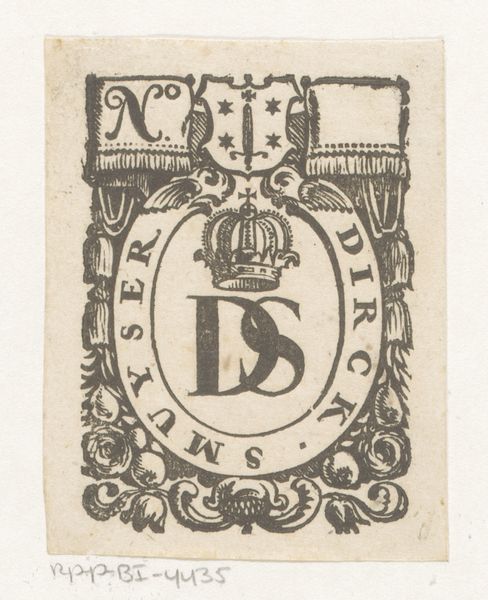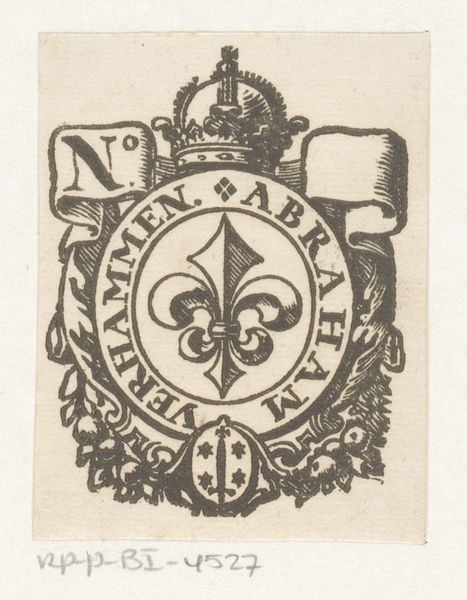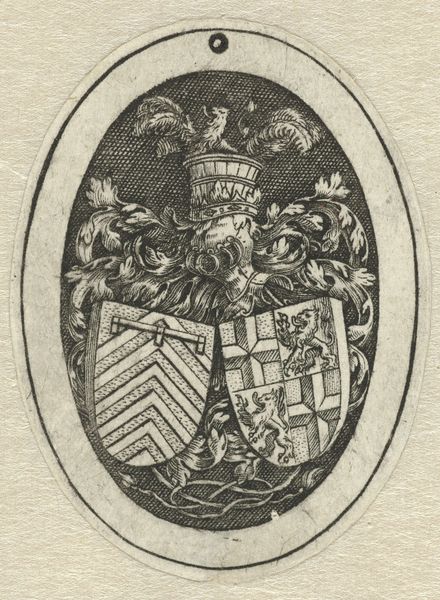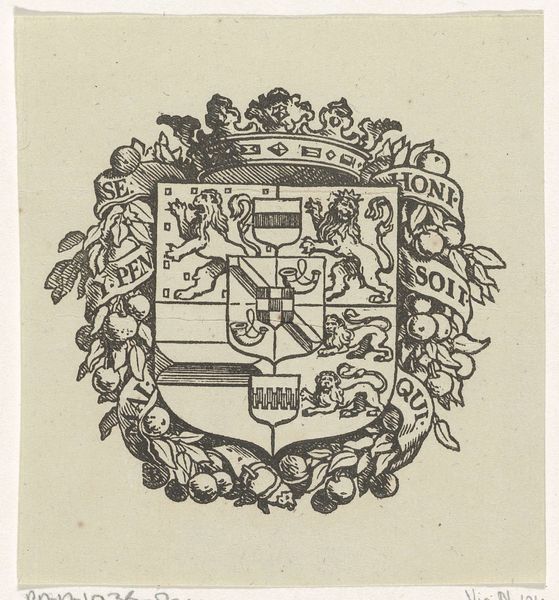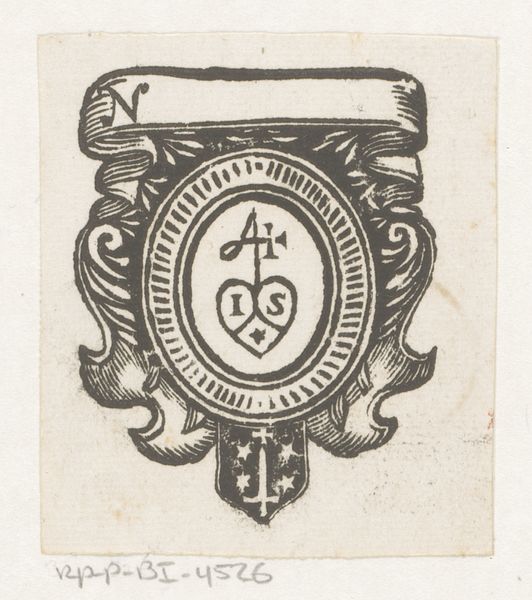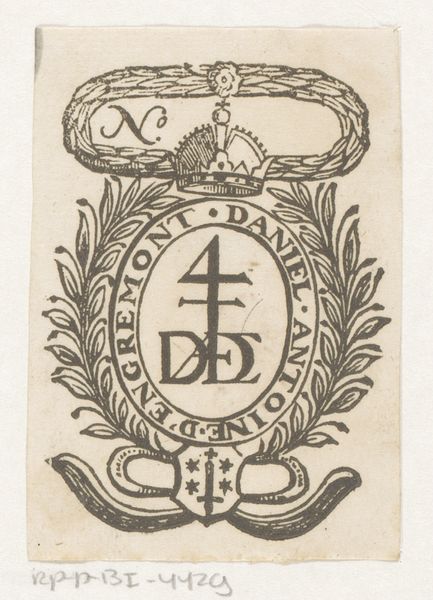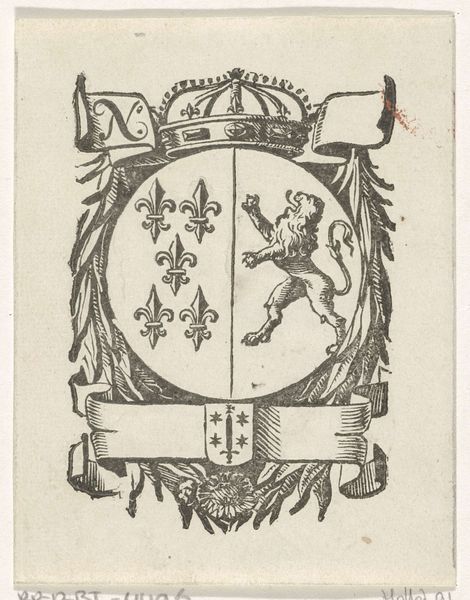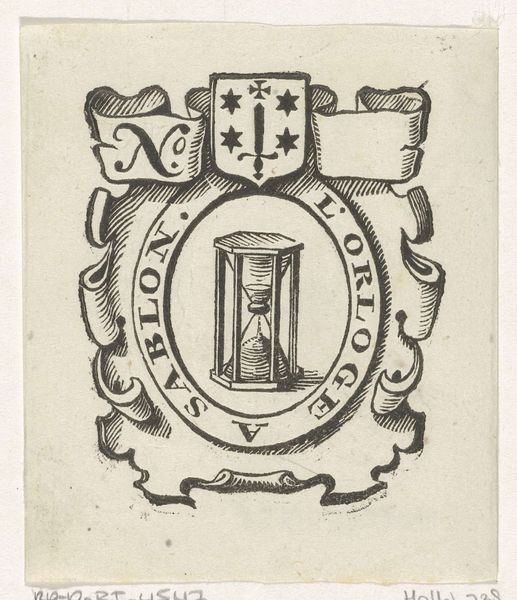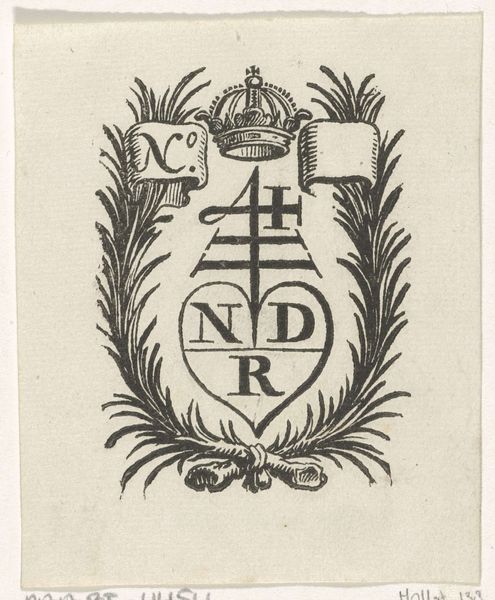
Vignet met een wapen, het wapen van de stad Haarlem met een kroon en een monogram 17th century
0:00
0:00
drawing, ink, engraving
#
drawing
#
medieval
#
pen drawing
#
old engraving style
#
ink
#
history-painting
#
engraving
Dimensions: height 74 mm, width 52 mm
Copyright: Rijks Museum: Open Domain
Editor: We're looking at a 17th-century engraving: *Vignet met een wapen, het wapen van de stad Haarlem met een kroon en een monogram,* by an anonymous artist. The stark lines create a very formal feel, almost like an official seal. What strikes you about its place in history? Curator: The visual language of heraldry, as we see here with the Haarlem coat of arms, served a crucial public function. Consider its context. In a pre-mass media era, these symbols visually communicated power, lineage, and civic identity to a largely illiterate population. This wasn't just decoration; it was a form of propaganda and social ordering, reinforced through constant visual reminders in public spaces. How might this emblem influence public perception of Haarlem? Editor: That's fascinating. It would be a constant assertion of authority. Did the choice of imagery, like the fleur-de-lis, hold specific political weight? Curator: Absolutely. Symbols in heraldry were deliberately chosen and evolved over time. They represented historical alliances, territorial claims, and even aspirational values. The fleur-de-lis, often associated with French royalty, could signify a complex web of relationships and perhaps even ambition. What does the crown suggest about Haarlem's relationship to broader European powers at the time? Editor: It implies a degree of autonomy, perhaps a city-state mentality? Learning to ‘read’ these historical symbols opens up so much about the past! Curator: Precisely! By understanding the socio-political forces at play, we can interpret this seemingly simple emblem as a powerful tool used to shape public consciousness.
Comments
No comments
Be the first to comment and join the conversation on the ultimate creative platform.


